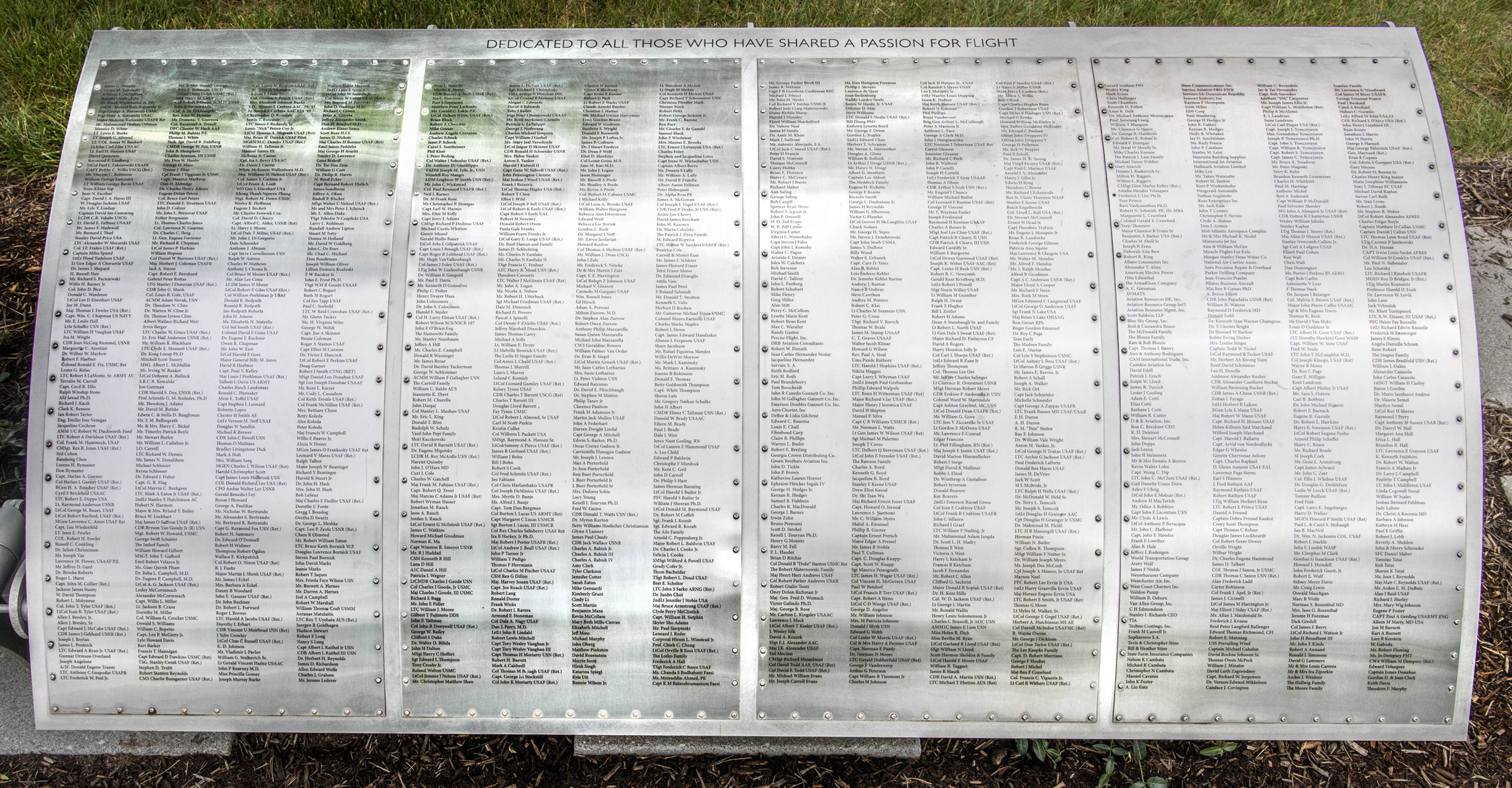Foil: 5 Panel: 2 Column: 1 Line: 66
Wall of Honor Level: Air and Space Friend
Honored by:
Col. Stanley L. Mushaw is the Director, Space Policy, Planning and Strategy, Office of the Assistant Secretary of the Air Force (Space), Pentagon, Washington, D.C. He is responsible for developing broad goals, policies, and related guidance for Air Force space activities on behalf of the ASAF (Space), Chief of Staff, and the Secretary of the Air Force. He was previously assigned as the Deputy Director, Plans, Policy and Resources, for the National Reconnaissance Office (NRO). Col. Mushaw’s prior assignments included Headquarters USAF, the Joint Staff/J-3 (Special Technical Operations), Strategic Air Command (SAC) Headquarters, and the Air Force Space Division Headquarters. He has served in numerous operational units including the Defense Support Program (DSP) and Ballistic Missile Early Warning System (BMEWS), and commanded Air Force Space Command’s BMEWS site at Clear, Alaska. Col. Mushaw earned Master’s degrees from the Naval War College and the University of Southern California, and conducted additional graduate work at the University of Chicago. He completed his undergraduate work at the University of Oregon and is a native of Hillsboro, Oregon.
Colonel Stanley L. Mushaw led the Secretary of the Air Force Spacelift Task Force to develop the strategic direction and future plans for management and operation of the Air Force’s space launch bases and ranges. The Spacelift Task Force conducted a review of all major space launch studies, analyzed launch operations, acquisition and management activities, and conducted senior level partnership workshops between the Secretary of the Air Force and senior executives from the satellite and space launch industry. As a direct result of these efforts, the Air Force adopted a new Expanded Partnership policy with the space launch industry that will provide for increased operational flexibility in the scheduling of commercial launches, give the commercial customer a greater voice in operational planning, and accelerate the pace of launch range modernization to enable a more rapid turnaround of national security, civil and commercial launches.
Based on the success of the Air Force’s Spacelift Task Force, the White House formed an Interagency Working Group (IWG) to assess the Future Management and Use of U.S. Space Launch Bases and Ranges. Colonel Mushaw was the lead staff representative for the Air Force and worked directly with the National Aeronautics and Space Administration (NASA), the Federal Aviation Administration (FAA), the National Reconnaissance Office (NRO), and the President’s Office of Science and Technology Policy (OSTP) to craft a new national strategy for spacelift. The new Administration position, as endorsed by the President’s Science Advisor and National Security Advisor, will recommend new management structures to encourage a closer government-industry partnership, new congressional legislation to permit non-federal investment in the space launch ranges, common safety requirements for the government, civil and commercial sectors, and a new Air Force and NASA agreement to pursue the next generation of launch range technology.
Colonel Mushaw was also directly responsible for the successful stand-up and implementation of the Joint Space Management Board (JSMB) which opened a new, unprecedented era of space cooperation and systems integration between the Department of Defense (DoD) and the Intelligence Community (IC). He personally organized two of the three historic meetings, defined the agenda for cooperative work between the DoD and the IC, and ensured successful implementation of all projects. This resulted in creation of the new National Space Communications Program (NSCP) for the Air Force and NASA; the first National Security Space Master Plan which will help guide the $14 billion national security space budget; two major systems architecture development efforts which defined the future DoD investment strategy for Military Satellite Communications (MilSatCom), space control and the protection of U.S. space assets; and an integrated space systems roadmap which allows for the first ever, integrated planning between DoD and National Reconnaissance Office (NRO) space programs.
The success of the JSMB led the Deputy Secretary of Defense (DepSecDef) to pursue further opportunities for integrating and streamlining the management of national security space activities. Col. Mushaw prepared the DepSecDef directive, which tasked the defense and intelligence space communities to develop the next step in program management evolution. Col. Mushaw then led the initial team which created the new national security space management process. As a result of this initiative, the Secretary of Defense and Director of Central Intelligence signed a Memorandum of Understanding (MOU) in July 1998 which combined the DoD Space Architect and systems architecture elements of the NRO into a single National Security Space Architect. In addition, the MOU established a new National Security Space Senior Steering Group (NSS-SSG) and realigned the office of the Deputy Under Secretary of Defense (Space ) into the Office of the Assistant Secretary of Defense for Command, Control, Communications, and Intelligence (ASD(C3I)).
The cumulative effect of these actions will be the fulfillment of Presidential guidance in the new National Space Policy to ensure that defense and intelligence space activities are integrated to the maximum extent possible. In particular, the new NSS-SSG brings together for the first time the Offices of the Secretary of Defense, military services, intelligence agencies, NASA, FAA, and the Departments of State, Commerce, Energy and Transportation into a single forum for deliberating major space policy, planning, and architecture matters. The new National Security Space Architect (NSSA) will provide comprehensive integration of user requirements into future space systems architectures to include space, ground, and communications links, as well as the interfaces to user equipment. Together, the NSS-SSG and the NSSA will allow the defense, intelligence and civil sectors to collaboratively develop integrated space program plans and provide the most cost effective, mission capable space systems in support of U.S. national security.
Wall of Honor profiles are provided by the honoree or the donor who added their name to the Wall of Honor. The Museum cannot validate all facts contained in the profiles.
Foil: 5
